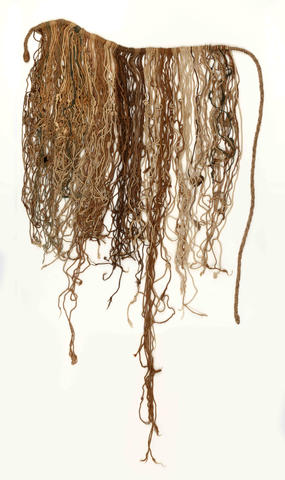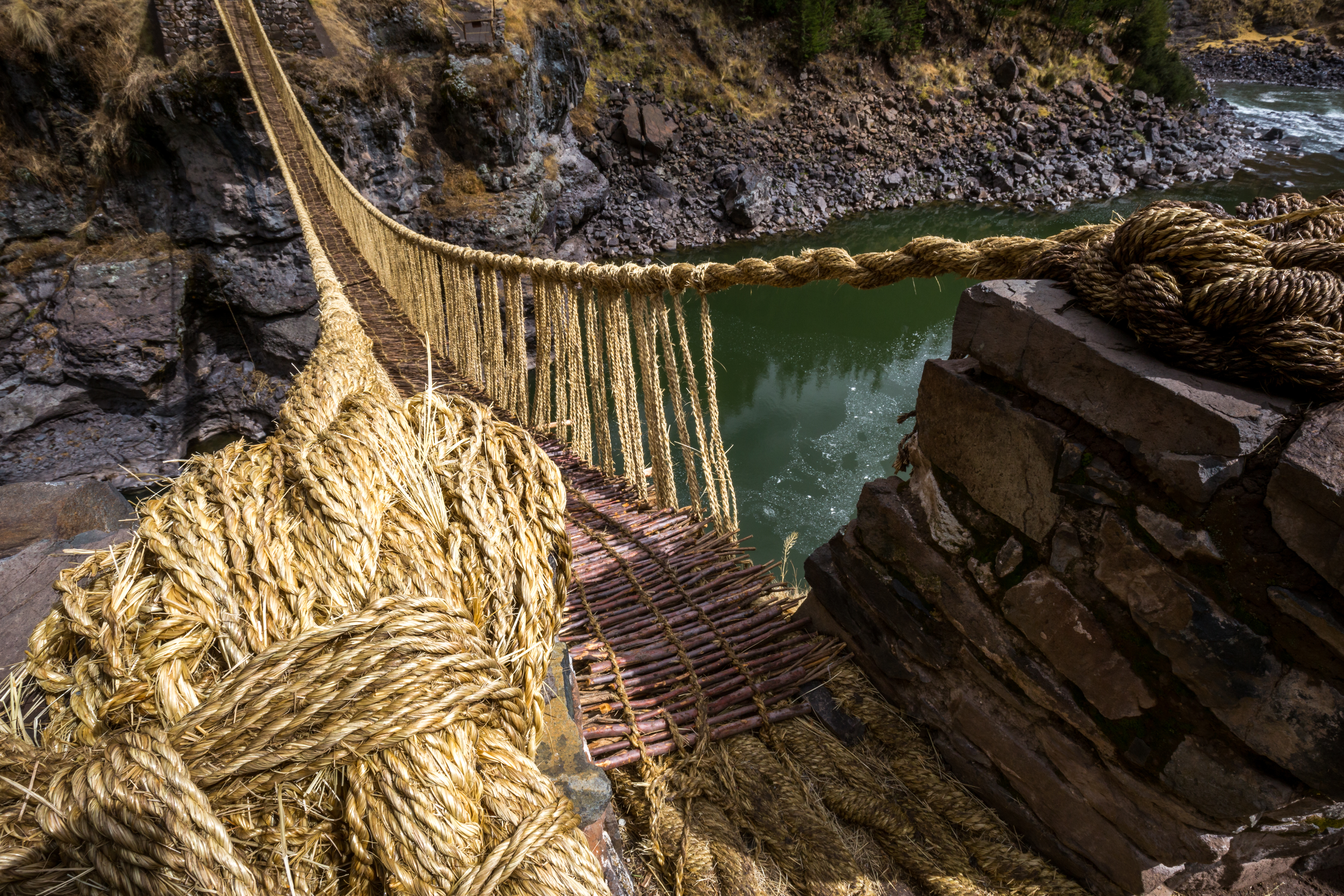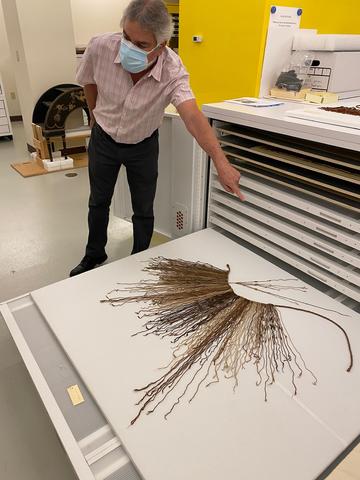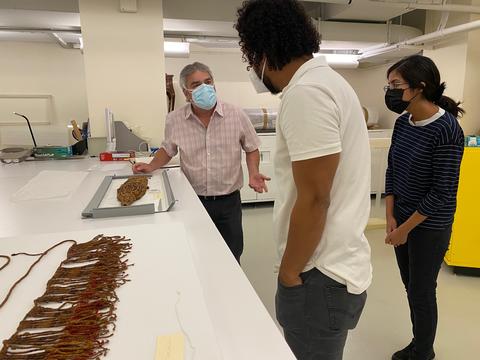Taking Measure
Just a Standard Blog
Historic Measures: How Standards and Technology Enabled the Inca Empire to Thrive
In honor of National Hispanic Heritage Month, a reflection on the achievements of the Inca of the South American Andes, who were the ancestors of many Hispanics today, and their data-recording device or “khipu,” which played an important role in engineering and administration.

“There is knowledge to be gained from the examination of these indigenous cultures, not just for the sake of gathering knowledge, but for its application in our contemporary lives.” —Kevin Gover (Pawnee), Smithsonian Institution, National Museum of the American Indian
The Inca of the Andes exemplify South American Indigenous knowledge and achievement. Their ability to reign and administer their empire with the use of technology enabled its rapid expansion. While it is impossible to know all the ancestral knowledge that has been lost, we are grateful for the artifacts that remain and to the scholars who have shed light on these achievements. At the heart of the NIST mission is “advancing measurement science, standards, and technology in ways that improve our quality of life.” Oftentimes advancement happens best when we learn from other experts — including those who predate us by more than 500 years.
Though short-lived, the Inca Empire (1450-1534 A.D.) altered its environment very effectively to increase productivity. Most notably, the Great Inca Road (Qhapaq Ñan), a network of more than 40,000 kilometers (km) of roads, bridges and other structures, was an extraordinary engineering feat that had a great and lasting impact on the expansion, development, administration and control over their land. At the heart of these remarkable social and technological advances is the khipu (or quipu), a data recording device using knotted and colored strings made from cotton or camelid fiber. Khipus recorded statistical data for all matters like census, tributes, production, etc., and preserved narrative data including stories and poetry, among other things.
Civilization in South America predated the arrival of the Europeans. The Inca Empire stretched from the Pasto region in Colombia, to Santiago, Chile. Descendants of the Inca today live in Peru, Ecuador, Bolivia, Chile, Argentina and Colombia. Latin America, much like the United States, is a melting pot of different cultures, and the Indigenous population played a really important role that shaped the region into what it is today.

Millions of visitors travel to see the Inca structures of cut stone that are found in Cuzco, Peru, and at the archaeological site of Machu Picchu. As a Hispanic mechanical engineer, my visit sparked a desire to better understand the science behind these remarkable Inca structures.
Given the diversity of land and climate across their empire, which ranged from coastal desert to tropical highlands, the Inca faced complex engineering problems. The dramatic topography can take you from sea level to 6,700 meters (m); in some places this change in elevation occurs over a relatively short span of 360 km. Furthermore, their complex structures were built without iron and steel tools, power tools and wheeled vehicles. Without a written language, the only data-recording system was the khipu, yet with it, the Inca could record any number imaginable. They used the same “base-10” system that we use today.
The khipu was a critical tool in engineering and record keeping in the Andes. Anthropologists have established that it was used at every level of government administration to record and transport statistical data, including measurement, census, statistics, accounting and tax records.

The Incas had a unique governance structure. They occasionally collected and summarized data in khipus for use at higher levels of government until it ultimately reached the capital, Cuzco. Similarly, they could dispense this information from Cuzco to all corners of the empire. All information was recorded by the khipucamayoc (khipu makers), who received extensive training to learn to tie the knots, read and interpret khipus, and maintain archives. The khipus that they created were a portable and semi-durable record. The tail of the string network wrapped and protected the contents. Runners physically shuttled the data in this form. They would traverse the land on foot in a relay system from one way station (tambo) to the next, similar to the U.S.’s pony express. The khipucamayoc held a high status in the Inca Empire as well as Wari Empire (600-1200 A.D.), which predates the Inca.
Using khipus, the Inca likely established standard construction techniques and designs and communicated them for construction projects across the empire. Critical infrastructure for operations included lodging places (tampus), storage facilities (colcas), way stations (chaski wasi) and sacred spaces (huacas). Sites consisting of hundreds of round colcas were found to have used a standardized design, integrating natural ventilation to keep contents dry and cool. Spanish colonial accounts documented how the Inca used these buildings as operations and maintenance centers for their administration and redistribution.
Surviving Inca infrastructure also reflects the importance that was placed on function in addition to aesthetics and sustainability. They used local materials and built in harmony with the environment rather than trying to dominate it. For example, they designed culverts (drainage tunnels) with integrated steps to reduce the energy of the flowing water and thereby reduce road erosion. In areas of steep terrain, the Inca Road was designed using gradual slopes and integrated terracing. These features reduced the physical effort needed for humans and animals to traverse great distances and enabled controlled irrigation so that the land could be more effectively cultivated.
The dry-fitted masonry (caninacukpirca), which did not use any mortar, relieved hydrodynamic pressure and provided a level of earthquake resistance. The Inca also perfected a technique for building suspension bridges made of ichu grass. The Q’eswachaka bridge is the last such suspension bridge constructed with specialized Inca techniques. The bridge is rebuilt annually using local plant materials.

“The whole road is of one design … made by hand and breaking through mountain chains and hillsides … it is one of the greatest constructions that the world has ever seen.” —Miguel de Estete, Noticia del Peru [News of Peru], 1535
Our Trip to Dumbarton Oaks

This August, my colleague Marcos Reyes-Martinez, a NIST materials research engineer and president of the Association of NIST Hispanic Americans (ANHA), arranged a visit to Washington’s Dumbarton Oaks Museum to learn more about khipu. Juan Antonio Murro, a renowned archaeologist, expert in pre-Columbian art and chief curator of the Dumbarton Oaks Museum, conducted the tour in the museum archives for Marcos, Polette Centellas (another NIST materials research engineer) and me. Juan Antonio and Jeffrey Splitstoser were co-curators of the 2019 exhibit of “Written in Knots: Undeciphered Accounts of Andean Life,” the first exhibition of khipus from three different periods: the Wari, Inca and post-Inca.
During our visit, we learned that “khipu” literally translates to “knot” in Runa Simi, or Quechua, the language of the Incas which is still widely spoken in the Andes. We also learned that there are only about 1,000 khipus in existence from the Inca Empire (1400-1534 A.D.) and less than a dozen in museum collections from the long-lived Wari Empire (600-1200 A.D.).
The Dumbarton Oaks Museum has four Inca khipus, three Wari khipus and one post-Inca khipu likely from the Spanish colonial period (1500-1832 A.D.) in its collection. They have only begun to characterize and study these artifacts. Murro shared that the Europeans who colonized South America lacked the knowledge and interest in recording the standards for creating and reading khipus. They did, however, actively seek to destroy the trove of khipu archives to dominate the Inca and erase their history.
“Lo otro es que más torpes estamos nosotros en entender la manera de los libros de ellos, que no ellos en entender los nuestros, pues ha más de setenta años que tratamos entre ellos y nunca acabamos de saber la traza y reglas de sus ñudos y cuentas.” —Garcilazo de la Vega, Comentarios reales de los incas
“We moreover are slower in understanding their books than they in following ours; for we have been dealing with them for more than seventy years without ever learning the theory and rules of their knots and accounts.” —Garcilazo de la Vega, Royal Commentaries of the Incas and General History of Peru
The mysteries of the khipu still challenge anthropologists and scientists. Murro explained that there have only been two significant breakthroughs to date, both attributed to mathematical insights. The first, in 1912, was when Leslie Leland Locke, an anthropologist with an applied mathematics background, studied khipus and published several pioneering interpretations. He concluded that the khipu knots were used for purely numerical purposes; the distances from the main cord located the orders of a decimal scale. He also found that the khipu was not used for counting or calculating, but for record keeping. He believed that the color of the khipu was ornamental; and most importantly, he identified it as the earliest known use of base-10 notation in the Western world.

The second breakthrough took place nearly 100 years later, in 2017. Manuel Medrano, a Harvard University undergrad, studied the numerical data from six khipu artifacts and the Spanish document that is a direct translation of the khipus (to date, this is the only instance where an existing khipu, or collection of khipus, has ever been matched with a written transcription). Medrano discovered that, in these khipus, cord attachment and cord color identified social organization. If you’re interested in more details about Medrano’s work, he published a paper on his discoveries.
Murro noted that in addition to the statistical khipus, there are narrative khipus that we can’t yet understand. One might imagine that as the data for the existing khipus are digitized (knot location, type, color, etc.), machine learning algorithms might make possible the next breakthrough.
While we recognize that valuable ancestral knowledge has been lost, we are very fortunate to have local access to these ancient artifacts and are grateful to the scholars who have and continue to study them. We look to learn from the expertise of the Inca as we face modern day challenges in engineering and sustainability. We gratefully acknowledge Juan Antonio Murro and Jeffrey Splitstoser for their fruitful discussions and useful input in the writing of this piece.
Although the khipus are not currently on public display, the Dumbarton Oaks Museum is open to visitors, and the full khipu exhibit, videos and catalog are available online. In addition, the Smithsonian Institution has a wonderful symposium series and web publication that dives deeper into what we know about Inca engineering and technology.
About the author
Related Posts
Comments
hi






Amazing article, bringing to the surface knowledge once forgotten.